Log in or create new account to save this product to your wishlist.
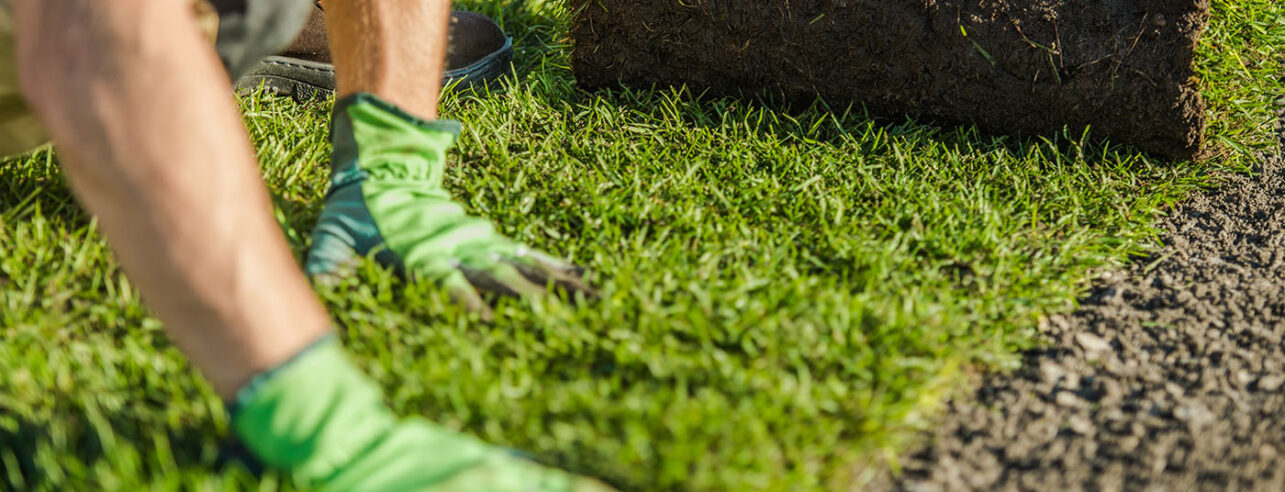
A Comprehensive Guide to Creating a New Lawn
Planning to start a new lawn? What steps do you need to take for a perfect lawn? With this step-by-step guide, you can create that coveted lush green grass.
🌱 All important maintenance moments for your lawn during the year. Leave your email and we will send you the lawn calendar for free.
Enter your email
Receive the lawn calendar in the mail
Enjoy a green lawn all year round!

- Order by 2PM = shipped today
- 250.000+ satisfied customers!
- 60 day satisfaction guarantee
Is your lawn in need of revival? Recently moved into a home with a neglected garden? It’s the perfect time to start fresh and create a new lawn.
- Laying a lawn: what you need to know
- What type of soil is in my garden?
- Creating a new lawn: What type of grass do I want?
- Creating a new lawn in 10 easy steps
- New lawn aftercare
Laying a lawn: what you need to know
When creating a lawn, there are some important considerations:
- What type of soil is in my garden?
- What is the lawn going to be used for?
- Is my lawn in full sun or in the shade? Or both?
- What type of grass do I want?
- How large should the lawn be?
- Do I want to sow grass or lay turf?
We provide you with insights so you can confidently answer these questions.
What type of soil is in my garden?
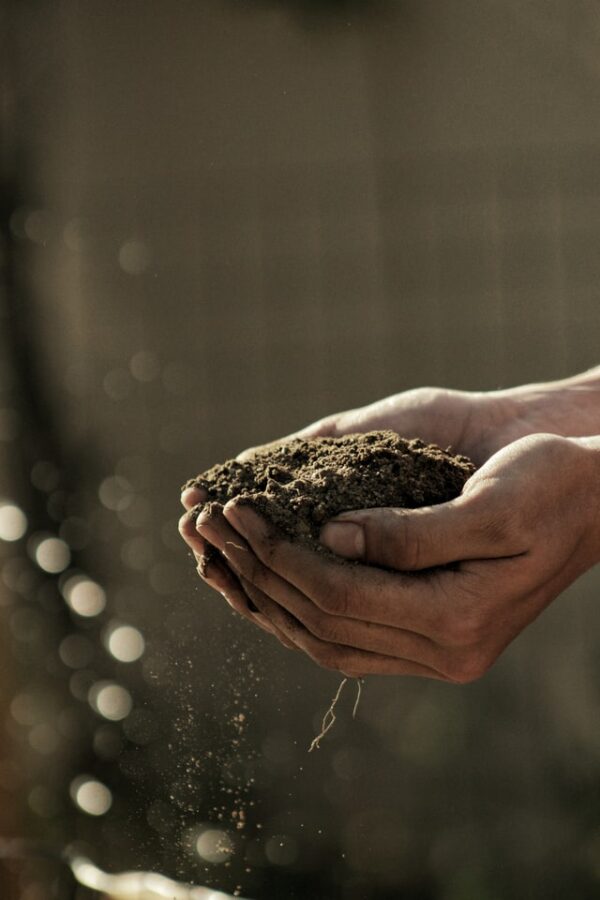
The type of soil in your garden determines how to best care for it. Understanding this is crucial for soil cultivation, choosing fertilisers, and adding organic matter. In the UK, common soil types include clay, sand, and loam.
The soil in your garden primarily depends on your location. Occasionally, soil is excavated, altering the natural soil type. If you want to know precisely which soil type is in your garden, you can conduct or have a test done.
Creating a new lawn: What type of grass do I want?

Next, determine the purpose of your lawn.
Do you want grass that feels soft and fine, or will it be frequently used for sports and games?
More details on determining the purpose of your lawn can be found here.
There are different types of grass seeds, and we’ll highlight some for you.
Creating a high-use lawn
For heavy use, Sports & Fun grass seed is the best choice. This grass seed germinates quickly and creates a beautiful, dense lawn. It can withstand rough play, so children can run around or kick a ball. If the grass gets damaged, it recovers quickly and is strong enough to endure the winter.
Creating a shady lawn
Does your garden face north or have many trees? In that case, there’s a high chance your lawn will be in shade for a large part of the day. Take this into account when selecting grass seed. Not all grass types thrive in the shade, but shade grass does! This consists of grass varieties with a low light requirement.
Discover more about growing grass in shaded areas.
Creating an ornamental lawn
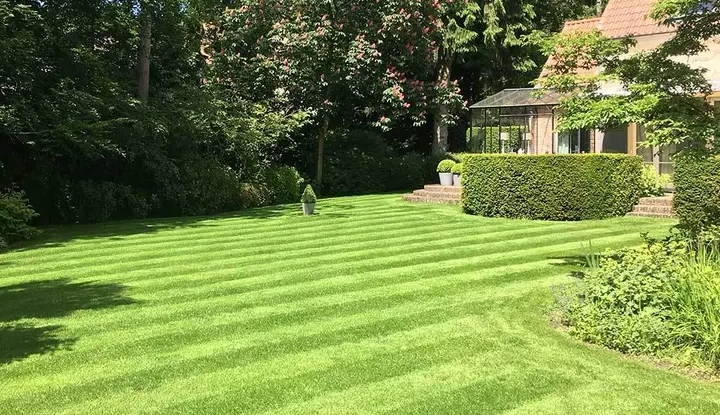
Do you want a beautiful English ornamental lawn that leaves everyone amazed? With ornamental lawn grass seed, you can easily sow your own elegant lawn. The grass varieties in this mixture feel pleasantly soft. It’s not suitable for heavy use, but you can walk on it without any issues.
-
Sports & Fun Grass Seed
Out of stock
14.99- Order by 2PM = shipped today
- 250.000+ satisfied customers!
- 60 day satisfaction guarantee
-
Shade & Sun Grass Seed
Out of stock
10.99- Order by 2PM = shipped today
- 250.000+ satisfied customers!
- 60 day satisfaction guarantee
-
Premium Lawn Grass Seed
Out of stock
16.99- Order by 2PM = shipped today
- 250.000+ satisfied customers!
- 60 day satisfaction guarantee
Creating a new lawn in 10 easy steps
Building on the basics, let’s explore the 10 steps together to actualise your dream lawn!
Step #1: Remove Weeds
Before preparing the seedbed, ensure to remove weeds from the soil. This can be done manually or, if necessary, with a weed killer. In the latter case, be cautious to choose a weed killer that won’t affect new seeds; otherwise, the grass seeds may not germinate.
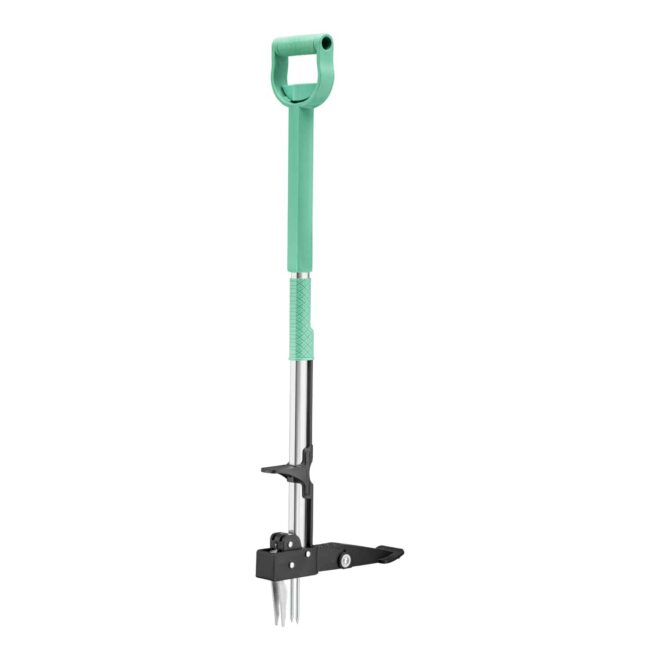
- Ergonomic design
- Comfortable and easy to use
- Rust-resistant
Step #2: Remove the old turf
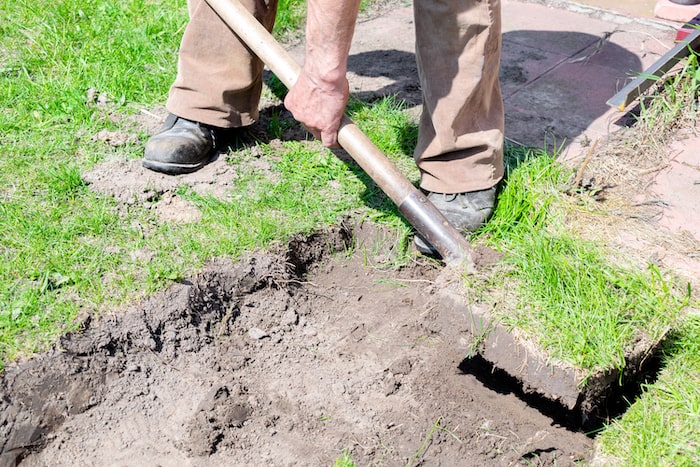
This is a little back-breaking but well worth the effort. If you’re laying a new lawn over old, weedy turf, then it’s best to remove it with a turf lifter.
Step #3: Plough and level the soil
Next, plow the soil using a rotary tiller to a depth of 20 to 25 cm. Allow the soil to settle for about 2 weeks, aiding the process by watering it thoroughly. After this waiting period, you’ll notice new weeds have emerged; remove them by hand.
Then, strive to achieve a flat surface. This can be done with a rake, or you can use specific leveling tools. Once the ground is completely flat, compact it with a lawn roller.
Tip: If you want to adjust the soil structure, now is a great time! You can do this by, for example, incorporating compost through tilling.
Step 4: #Fertilise your soil
Give your new seed an optimal chance to germinate and establish by fertilising the soil before you sow. MOOWY’s Lawn Starter fertiliser contains plenty of phosphorus, promoting root development for disease- and drought-resistant grass.
Use 25g per m², and rake it in.
| Time of year | At what stage? | Which fertiliser? |
|---|---|---|
| Feb-Oct | When sowing | Lawn Starter |
| March-Oct | 8 weeks after sowing | Easy Mow |
| Sept-Oct | Each year before winter | All-Round |
Once established, fertilise your new lawn three times within the first year – twice in the first growing season. Then, fertilise three to four times a year moving forward.
Step #5: Sowing your new grass
Sow by hand if you have a small lawn or use a spreader for a larger surface area.
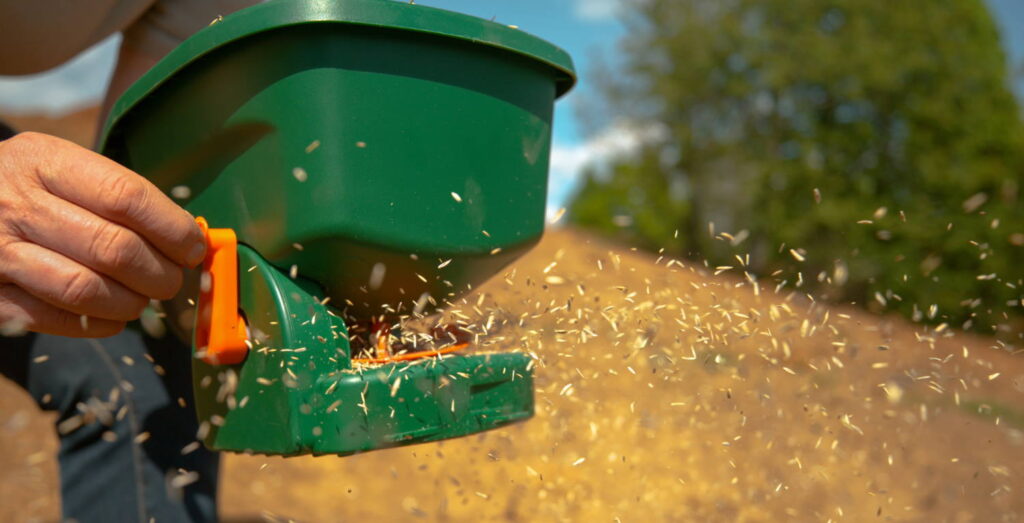
You’ll need 34g of seed per m². Calculate how much you’ll need before you start sowing.
Divide the seed into two measures. Sprinkle the first part lengthwise across the soil and the second part widthwise, covering the same area.
Lightly rake the grass seed to ensure optimal soil contact. Don’t cover the seed with soil – it won’t germinate evenly.
More details on sowing grass seed can be found here.
Step #6: Press the grass seed
Use a lawn roller to press the seed onto the soil surface. You can do this with your feet if you have a smaller lawn. You need direct contact between the seed and the soil surface for best results. This stops the seed from getting washed away when it rains or when you water.
Step #7: Water
It’s better to water lightly four times a day than to water heavily once a day; otherwise, you risk disturbing the seed, which will create an uneven covering. Keep watering daily until the seeds germinate. This should take around two weeks.
Step #8: Reseed bald spots
About 2 weeks after germination, you will see that some bare patches have appeared. Re-seed these bare patches with grass seed.
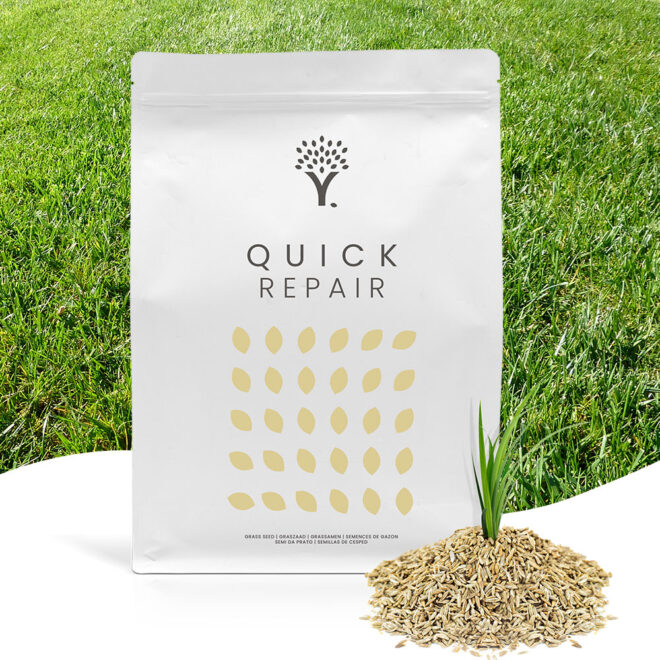
- Premier League-quality lawn in no time
- Robust and rapid growth; grass seed germinates in 7 – 14 days
- Perfect for the unpredictable UK climate
Step #9: The first mowing
Leave it 21 days after the grass has germinated before you mow, and avoid walking on your new grass plants during this time.
Never cut more than ⅓ of the length of the grass blade, or you’ll weaken the plant. If you want your grass shorter, wait a few days and mow another ⅓ of the length. Cutting every 3 to 5 days makes your grass grow faster.
Step #10: Limit lawn treading
You should avoid walking on your grass seed throughout its entire first season to ensure you don’t damage the vulnerable young plants. Give it a good few months before you start using your lawn, and it will repay you with many years of beautiful service.
New lawn aftercare
Now that you’ve established your lawn, it’s crucial to maintain it properly. This involves regular mowing, providing the right nutrients through fertilisation, and applying lime when necessary.
Scarifying and overseeding 1 to 2 times a year keeps the grass mat dense, preventing the growth of weeds and moss. Scarifying also allows nutrients, water, and oxygen to reach the plant more easily, resulting in better overall health.
Additionally, ensuring your lawn receives sufficient water is essential. Aid nature by irrigating regularly during dry periods. This can be done manually with a garden hose or, alternatively, through an irrigation system.
Ready to get started? Or do you need more information?
Congratulations! You’re now ready to create your lawn. Want to learn more about lawn or garden maintenance? We’ve got all the tips for you.
Do you have any questions after reading? Leave a comment or get in touch with us.
Happy gardening!
-
How to Grow a Chamomile Lawn SuccessfullyWhat do you think about a lush, fragrant lawn that's soft underfoot and filled with tiny white flowers? If this sounds just about wonderful for you, think on planting a chamomile lawn. This charming alternative to traditional grass has been gaining popularity in British gardens, offering a low-maintenance and visually appealing option for everyone with a garden.Read more
-
Designing and creating your new garden: a complete guide!Your garden is your sanctuary – or it could be. Check out our expert garden design tips. And dare to believe!Read more
-
The Great Grass Seed Comparison!It can be tricky to choose the right grass seed for your garden. Check out our review of some of the most popular brands.Read more
-
How to Improve Soil Quality: Analysing Your Garden Soil TypeThe soil condition affects the health of your lawn, hedges, flowerbeds, and roses! Find out how to determine your garden's soil conditions and which improvements to make!Read more
-
Removing Old Turf: why, when, and how?How to remove turf – it's a fairly straightforward task, but it's physically challenging. Find out how to remove turf and what to do next!Read more
-
The Pros & Cons of Real grass vs Artificial Grass – a complete guideConsidering artificial grass for your garden? While it can be a quick way to transform your garden, there are some things to consider. Read on for expert advice.Read more
-
How to Lay Turf – complete 8-step guideSowing seed for a new lawn is easy and cheap. But if you've set your heart on turf, make sure you know what you're looking for! Everything you need to know about turf.Read more
-
Returf your lawn or repair it? We'll help you decide.Your old lawn might be looking dull and tired. It could be time to think about returfing? Or maybe you could save it by overseeding?Read more
Leave a comment
Your answer will be displayed on the site and the interested party will be notified by email.
Leave a comment
Have a question or want to share your experience? Leave us a comment.

- Order by 2PM = shipped today
- 250.000+ satisfied customers!
- 60 day satisfaction guarantee

- Order by 2PM = shipped today
- 250.000+ satisfied customers!
- 60 day satisfaction guarantee

🌱 All important maintenance moments for your lawn during the year. Leave your email and we will send you the lawn calendar for free.
Enter your email
Receive the lawn calendar in the mail
Enjoy a green lawn all year round!



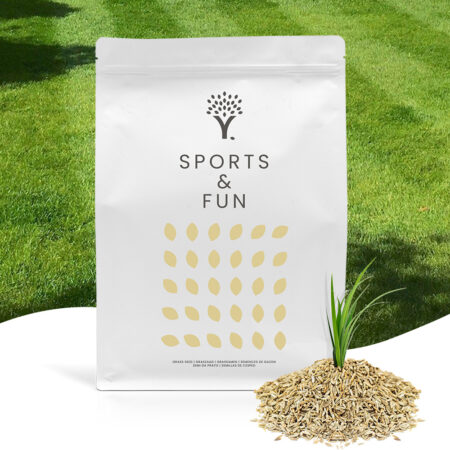
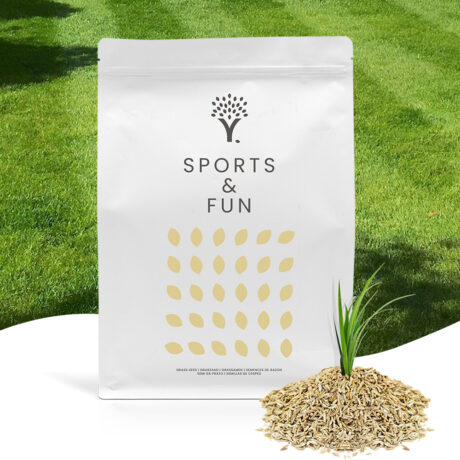
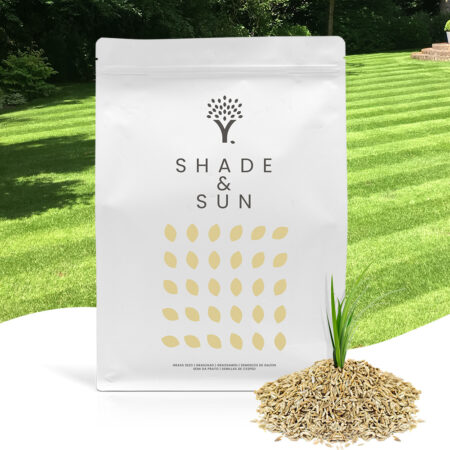
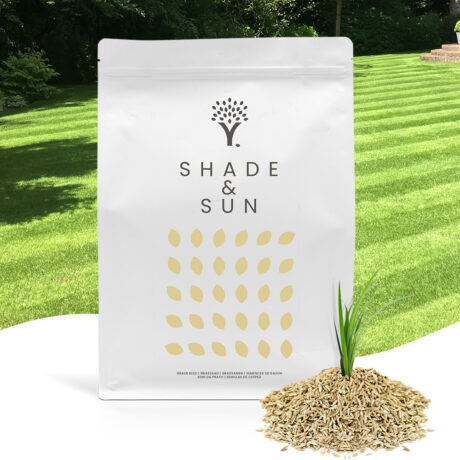

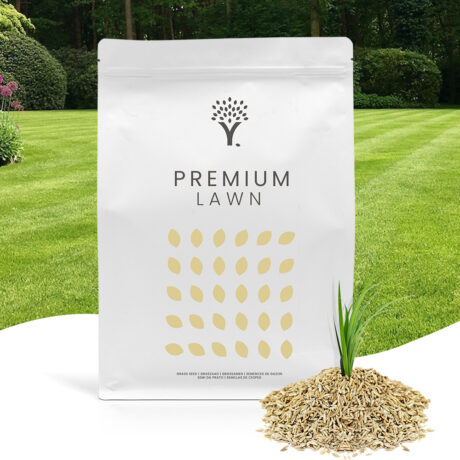



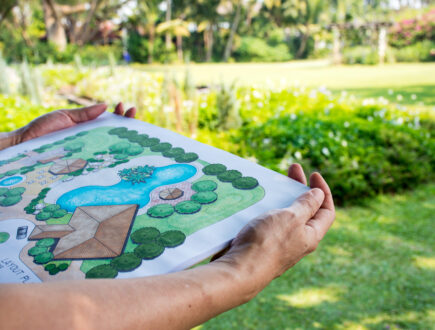
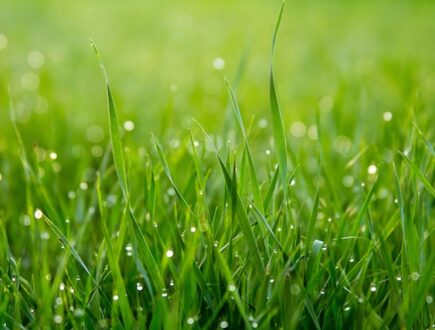

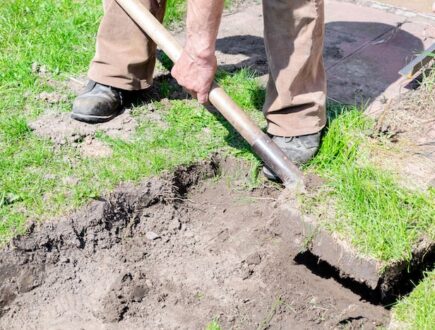
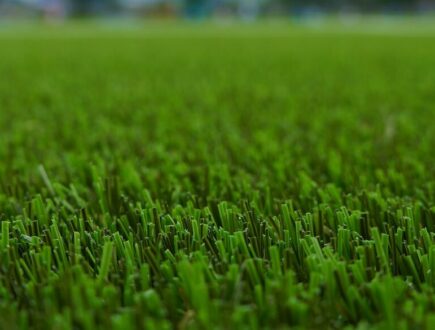
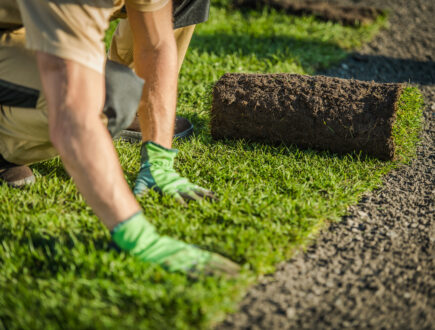










Comments (0)
There are no comments yet. Well then, what are you waiting for to
Be the first to write your comment!inaugurate this pretty page?
Do you have some comments?